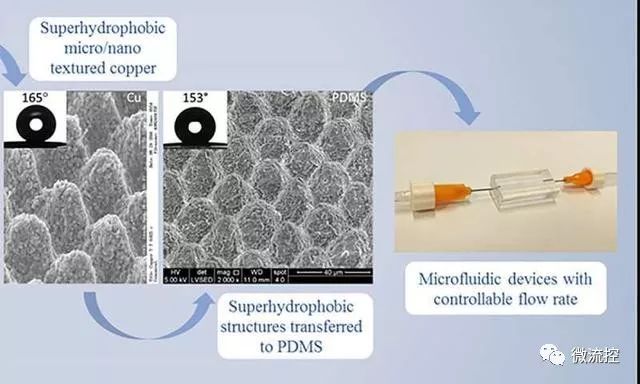This image shows the process of ultra-fast laser forming a super-hydrophobic surface on a metal surface, which is transferred to PDMS by transfer molding and assembled into a microfluidic device A new manufacturing process developed by Purdue University researchers may improve the water resistance of some common products, from medical devices and sensors to car engines and windshields. The Purdue University team has developed a new method to create superhydrophobic polymer microchannels. This technology provides a fast and inexpensive manufacturing technique to create microfluidic devices with controlled flow channels without the use of chemical treatments or complex flow control devices. These are basically very small ditches. They are formed in such a way that the water cannot adhere to the surface of the water, nor can they produce little resistance in the water flow. Then, you can pass water or other liquids to create smaller cooling channels and microfluidic devices. The research team used a two-step method to create a superhydrophobic surface. First, they use ultrafast lasers to create patterns or features on the metal surface. Then, in a process called transfer molding, the researchers created the same pattern on the polymer. The process is unique because it allows these surface patterns or features to be created on the inside of the polymer and not just on the outside. We basically use these characteristics to control the flow rate without expensive chemical treatments and coatings, which can be washed away or worn away. This picture shows a water droplet on a superhydrophobic surface produced, showing a very high contact angle. Researchers at Purdue University have developed a new manufacturing process to improve the water resistance of some common products This technology has many potential applications, including medical devices and sensors that use circulating fluid to detect abnormal or unhealthy conditions in patients. It can also be used in micro-cooling systems for electronics, microfluidic devices, microelectromechanical systems, self-cleaning surfaces, and microhydraulic systems in airplanes and automobiles. This technology can help create a windshield that is better waterproof and does not require wiping. According to reports, this technology can also be used in heat exchangers by removing condensed water droplets to improve heat transfer efficiency. Another possible application is electronic equipment. This technology can help electronic devices such as mobile phones and computers continue to be miniaturized. Our method of creating these superhydrophobic microchannels allows the use of smaller devices that are as efficient as much larger devices. Dust Explosion Proof Motor,Explosion Proof Induction Ac Motor,Special Explosion-Proof Motor,Dust Explosion Protection Motors Yizheng Beide Material Co., Ltd. , https://www.beidevendor.com
